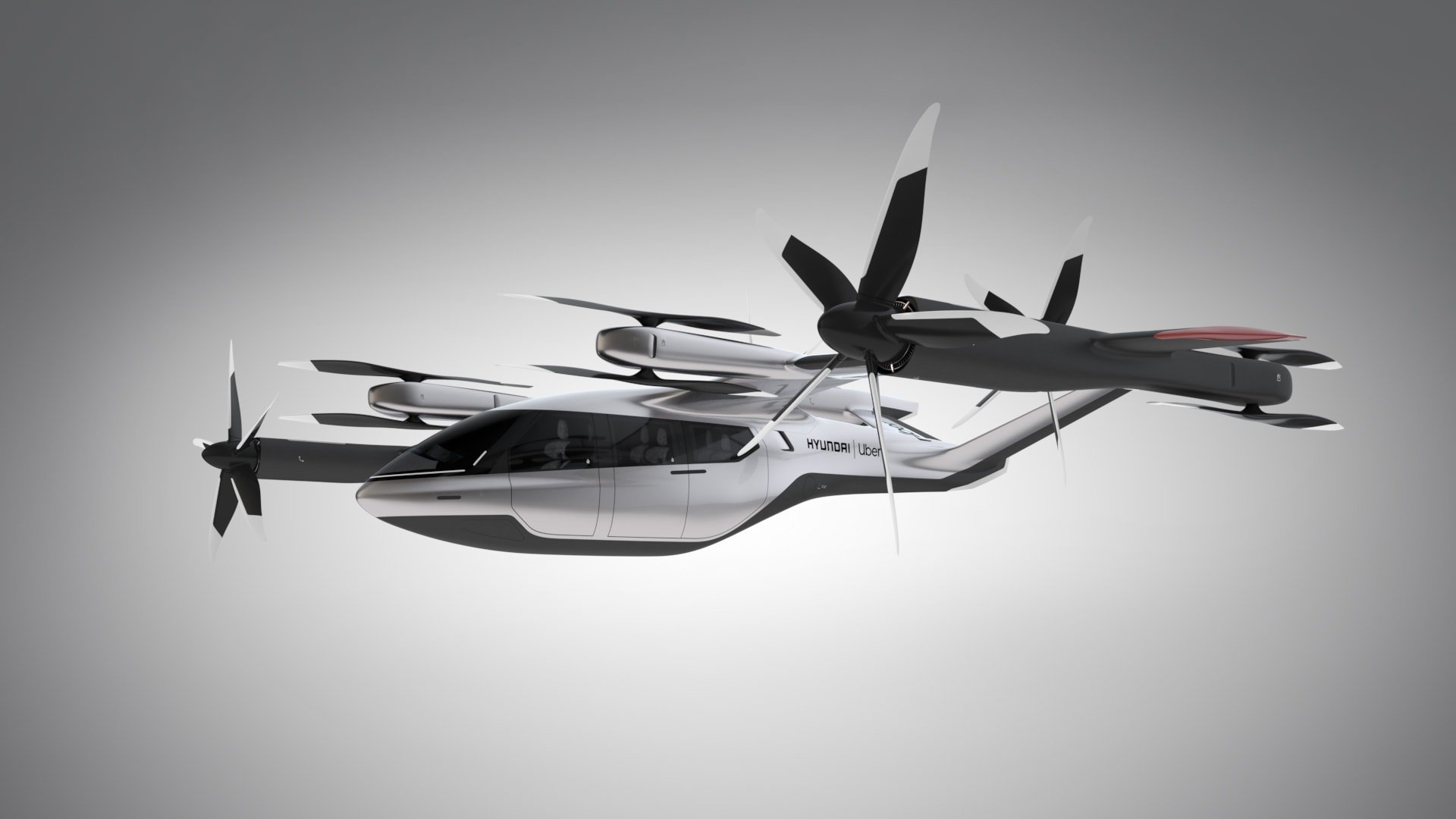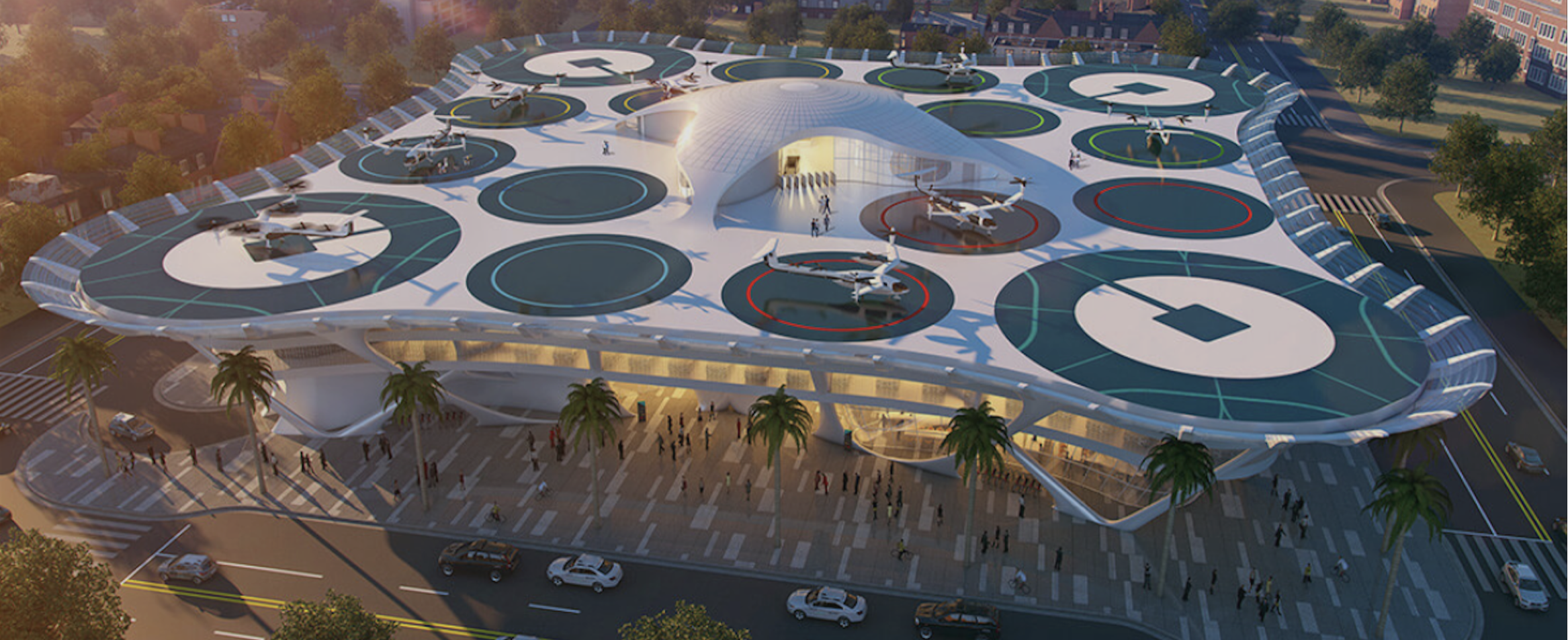
Urban Air Mobility
by SWRVO
What will the future of transportation look like?
In the near future, we predict that Urban Air Mobility (UAM) will become a common solution for your daily commute. With a sharply rising working population in urban spaces, people will continue to be pushed further outside of the cities. Using Virtual Reality (VR), we provide a simulated experience of what the UAM journey will be like. We have crafted the type of interactive experience that can help anyone wrap their head around this soon to be reality.
With the initiation of UAM development from major rideshare companies such as Uber and Lyft in collaboration with the automakers, we wanted to design an experience that imagines how that reality might look like in our daily lives. We have aimed to explore discussions around safety, comfort, trust, and ease of use that come with new services and the complexity that is required more than ever before. Our integrated web experience with VR takes users through each step of the process from booking your ride to traveling to the new transit stations, and finally riding in the new eVTOL (Electronic Vertical Takeoff and Landing) vehicles.
Urban Air Mobility Trailer
To jump right into my contributions to this project, the last part I worked on was two trailers for distribution and promotion. The longer version, shown here, takes you through the journey of a commuter utilizing the new service. It was a fantastic experience to be able to film, edit, and produce the trailers in their entirety with help from my classmate who happened to have a drone. Visual Media like this is where I find the most inspiration in my work as I have been a photographer for years and launched my video making career thanks to this program.
The Design Team
Anyone in design recognizes the great ideas don’t come to fruition overnight, but rather they require rigorous research, innovation, design, testing, and observation…
And it helps to have a team along the way. Being a part of Team SWRVO provided me with an opportunity to learn so many vital aspects of being a member of a dynamic design team. Additionally, it gave me an outlet to show my strengths in graphic design, computer model rendering, and visual media production, while still having amazing partners that could bring this huge project to life.
Research Goals
In order to inform our experience and design, we aimed to explore and understand a range of flight-related travel experiences that specifically looked at individual travel stressors, and how those can be facilitated internally and externally.
We understand that flying can stress just about anyone out, then add in a road commute and booking a multi step travel process on your phone, and the whole experience appears next to impossible. But with proper research and an understanding of human wants and needs, this crazy idea is completely possible.

Developing Infrastructure
One beneficial building block for this project was the fact that services like this are already in motion and being built as we developed our rendition of what the User’s Experience looks like. Here we can see a great rendition of what these ultra-fast terminals could be once they become commonplace in society.
Obviously, a major concern within quick rideshare service is the time spent being checked in to a flight, and the safety risk a poor screening process could pose. The goal with these terminals is to be as thorough as possible while being equally as efficient. These systems will take time to be properly developed, and user feedback/concern is as relevant and important as ever.
What we can control at this time is the users journey when booking a commute. Our team decided that simplicity and familiarity are important building blocks of this new and revolutionary service. And while we have no affiliation with Uber, our team based our app design off of an already pre-existing and trusted ride share system.
The Ultimate User Experience
When it comes down to gathering support and investment for such a huge change to our everyday infrastructure, words and pictures can only inspire so much confidence, but putting users straight into a concept can really drive home the point and secure the deal.
What ended up becaming the most intense and inspiring piece of this puzzle was creating a Virtual Reality ride that anyone could strap themselves into and experience first hand. Obviously, we couldn't film a real eVTOL ride as this is mere concept, but we could use movie magic and coding to insert a rider into the passenger seat of a potential vehicle.
The final result speaks for itself as we were able to deliver on a stunning first person view inside a concept aircraft. Utilizing DJI Drones, GoPros, Unity, and the Adobe Production suite, two other team members and myself created our final proof of concept to allow for full immersion.
As each piece came together, we sat a rotating cast of classmates in our test chair and recorded their overall experience as well as specific feedback for any inter-actable portion to deliver the final product.
We recognized this as critical step for any team working with real people they hope include in their ride share service, as providing a user centered design is the only way to find success and create trust with a greater population in the future.
My Impact and Takeaways
When it came time for our team to present this project at our Capstone Event, I went in with pure confidence and excitement that this proof of concept and the work that embodied it was going to be a smash success. The amount of engagement and questions we fielded post-presentation confirmed that theory for me. I am extremely proud of the work and effort not only myself, but my whole team was able to deliver on. I learned so many valuable lessons regarding teamwork and resourcefulness as each step of this process was handled, and I feel confident this project has set me up for success as a Graduate headed into in the ever expanding world market of design.







